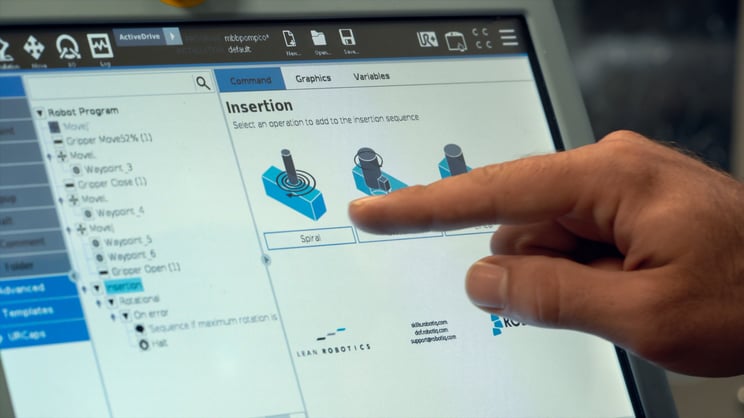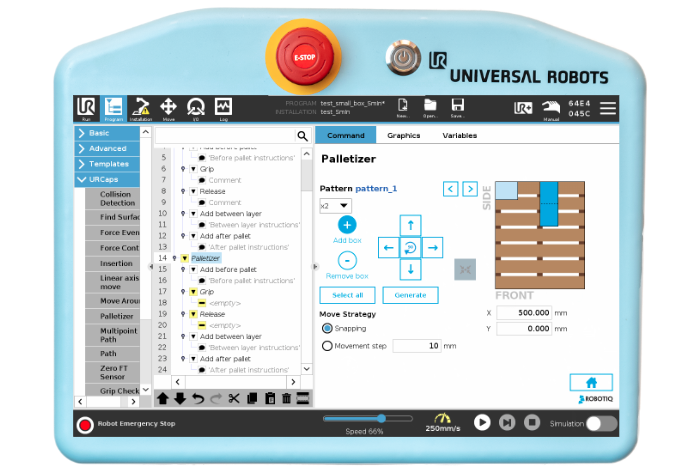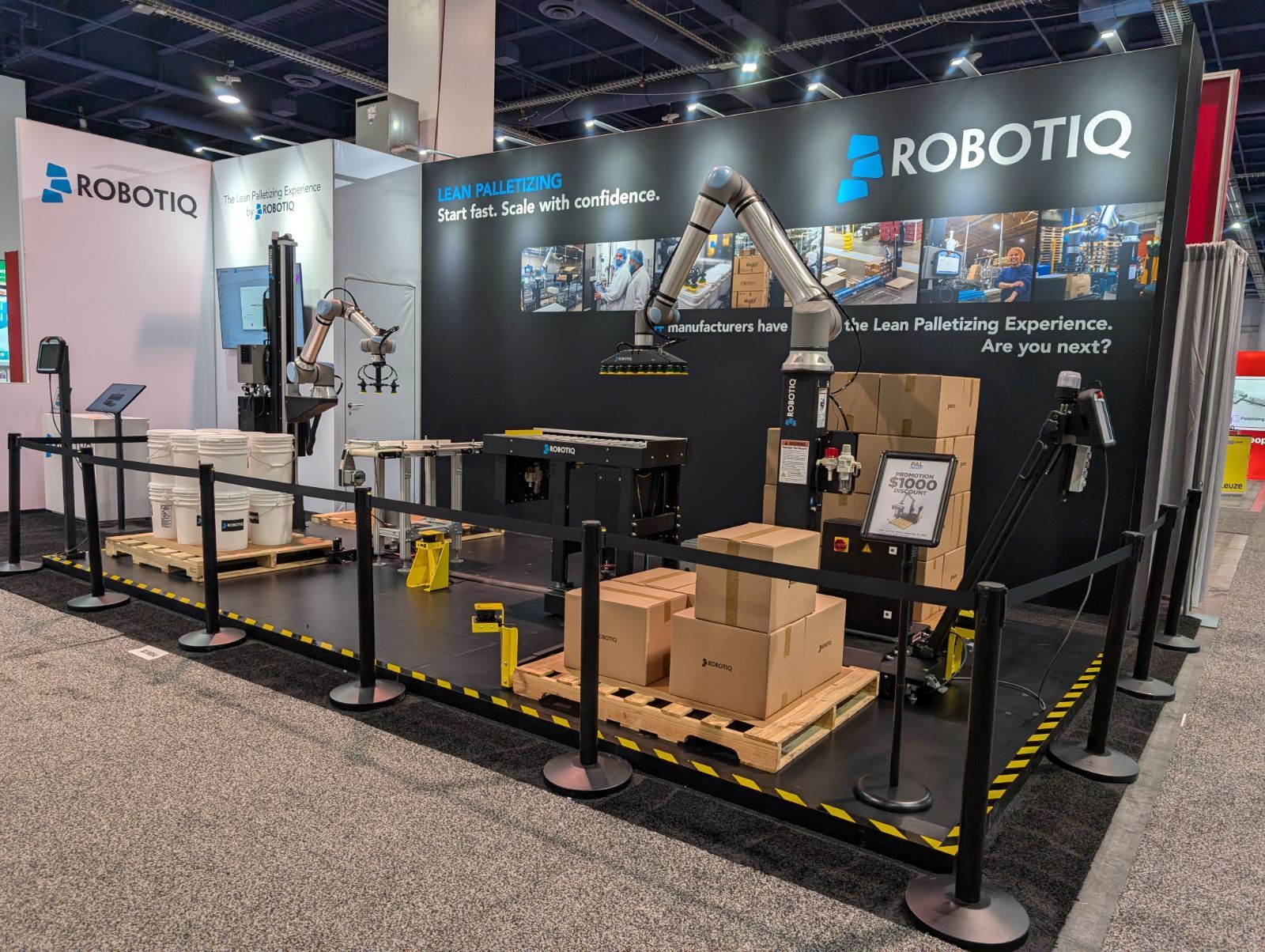How to Buy a Robot as an Automated Assembly Machine

Posted on Sep 16, 2022 in Automation
5 min read time
When you're looking for an automated assembly machine, there are a lot of different solutions you could choose from. A robot is just one of the potential options.
How can you decide which automated machine is the best for your needs?
If you're considering automating your assembly process, you first need to determine if a robotic solution might be right for your business. Your decision will be based on various factors, including the type of product you're assembling, the productivity requirements, and the specific assembly task.
In this article, we look at how you can go about shopping for an automated assembly machine and how to determine if a robotic solution is the right option for you.
How to determine if a robotic solution is right for your business
Before you can start shopping for solutions, it's important to understand what a robotic assembly solution is and whether your business is ready for robots.
A robotic assembly solution is a system that uses a robot to complete a particular assembly task. This could be pick and place, insertion, screwdriving, gluing, or another operation.
Robots are now much easier to both purchase and deploy than they were in the past. However, they might not be suitable for everyone.
Some signs you can look out for telling if you are ready for an assembly robot are:
-
The type of product you're assembling is difficult to assemble by hand because the assembly is very repetitive. Perhaps you are seeing more mistakes showing up in the inspection stage.
-
You need to assemble a large quantity of products and your current assembly process just can't keep up.
-
Some parts of the assembly process are causing a bottleneck, which is delaying production overall.
These are just a few of the possible signs that show you might be ready for a robot. The key factor is that you have a specific assembly task that it just makes sense to automate.
What factors should you consider with a robotic assembly solution?
When you are shopping for an assembly robot, there are some questions you can ask yourself to narrow down your options between all the different solutions available.
Questions include:
What is the cost of the robot? This is often the first question people have. The most useful perspective, however, is not the price tag but the return on investment the robot could generate.
How easy is the robot to use? Ease-of-use is a core consideration with modern robotic solutions. These days, there are so many user-friendly robots on the market that it makes little sense to opt for a more complex solution unless absolutely necessary.

How reliable is the robot? You need to be sure that the robot will do the job day in and day out with no problems. For this reason, it's better to select a well-tested robotic application solution than one that has never been done before.
In what environment will you be using the robot? The physical environment may influence which robotic solution you can choose. For example, if the environment will be dusty or wet, you may need a robot with an ingress protection rating.
How to shop around to find the best robotic solution
You will want to do your research before committing to a particular robotic solution. This doesn't necessarily mean you need to draw up a long list of competing solutions from multiple suppliers. Perhaps the first solution you see is the best for you. But it's helpful to compare a few different options.
There are 3 basic approaches to sourcing robotic applications:
-
Custom-designed solutions from an integrator. — This is the conventional way of sourcing industrial robotic solutions. It is often the most expensive, takes a long time, and can leave you reliant on the integrator to make any changes.
-
Do It Yourself (DIY) solutions where you build the solution yourself. — These can be fairly easy to deploy, especially if you use plug-and-play components that are designed to work together. However, this option can be challenging for new robot users.
-
Application kits. — This is the quickest, easiest, and simplest solution for most users. They need not be any more expensive than the DIY route (and can be cheaper). An application kit will include everything you need to get your robot up and running quickly.
As you look at different robotic solutions on the market, try to identify which of these categories they fall into and which meet your specific needs.
5 steps for purchasing a robotic assembly application
Here is a 5 step process for purchasing a robot as an automated assembly machine:
-
Determine if a robot is what you need for your assembly process. There may be other automated solutions that better suit your specific needs. You will only know if you start by keeping your options open.
-
Shop around for the best robot for your needs. Don't get overloaded trying to look for all the potential solutions, but it can be helpful to see a few options so you can compare.
-
Get quotes and compare them based on both cost and suitability. There may be different factors that are important to you, so you'll need to weigh their importance.
-
Choose the solution and supplier that best meets your needs. Remember other factors like the customer support provided by the supplier.
-
Place your order.
Once your robot arrives, you can start the process of deployment. This can take a few days if you are using an application kit, several weeks if you are going the DIY route, and months if you have sourced a custom-designed solution.
If you're ready to automate your assembly process, the best way to get started is just to get started. If you'd like to see some examples of robotics application kits, check out our solutions page.
What challenges have you encountered when purchasing assembly automation? Tell us in the comments below or join the discussion on LinkedIn, Twitter, Facebook, or the DoF professional robotics community.





-1.jpg)

Leave a comment